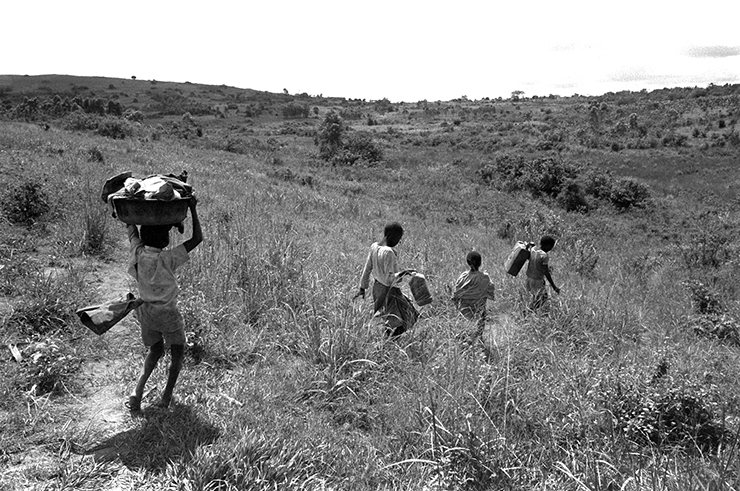
The Alaska coast is a rugged and remote place, much of which remains untouched by man. This story is told through the eyes of the Alaska Maritime National Wildlife Refuge, home to 40 million seabirds and many endangered animals . The refuge is huge: 3.5 million acres. If you were to lay it down on top of the lower 48 US States, it would start in Minneapolis, go to San Diego, and back to Georgia.The goal of this story is to show the interwoven connection between the land, the wildlife and the Aleut people.






In some communities of Uganda, approximately 80% of the children were classified as orphans when I photographed this project. This meant they had lost at least one parent to AIDS. In the African culture, if any family member is remotely capable of taking care of the children, they do it. Some grandparents cared for between 15 and 20 children.
When there are no adults alive in the family, or when the remaining adults are too old, the orphans learned to care for themselves, living in the homes left to them by their parents. This is the story of a family of nine children, ranging in age from 3 to 13, who lived in the Rakai District of southern Uganda. They had been on their own for two years. They lived in a village where someone died of AIDS approximately every 10 days. The older children in the family were responsible to go to the funerals of the villagers as the cycle continued.




The New River is sometimes called the Appalachian Highway. One of the oldest rivers in the world, it carries with it a way of life that can feel unchanged by the years. I was struck by the people, the way of life and the river itself — its strength, beauty and staying power. Coffee shops thrive where everybody knows each other. Elderly folks are born and bred on the same land. Kids get around on bikes, and informal jam session spark up on banjos and fiddles. There is a pace to life along the New that the rest of America shed a long time ago, or maybe never even had.






Irish mist mutes the sharp edge of the thistle and stone on Inishmore, one of Ireland's three Aran Islands. Still tied by tradition to field and sea, islanders face a turbulent future. They are off the west coast of Ireland, and the Irish language and culture are still alive there. "It's change or die," as one islander said. Change means embracing the hordes of visitors who come for beauty and solitude — and threaten to erode both.




The Pan American Highway weaves its way from Alaska down to the tip of Argentina. In this book project, I followed the road from the highlands of Guatemala to the Moreno Glacier in the most southernmost region of Argentina. My goal was to show the immense diversity of culture and landscape along the road. One of the only breaks in the highway is in the Darien Gap in Panama. In Central America the highway weaves through 30 volcanos and pine forests as it travels through six countries and then down through South America.








The Bruderhof believes that there is a different way to live, that it is possible to live in unity in a fragmented world, have peace in a violent world, and find love in a culture full of hate. They commit themselves to this, day by day, choosing to live together in full community. They own all things in common with more than 2,000 members living in eleven communities. Everyone gives what they have and receives what they need, exhanging people from one community to another as needed.








Irish mist mutes the sharp edge of the thistle and stone on Inishmore, one of Ireland's three Aran Islands. Still tied by tradition to field and sea, islanders face a turbulent future. They are off the west coast of Ireland, and the Irish language and culture are still alive there. "It's change or die," as one islander said. Change means embracing the hordes of visitors who come for beauty and solitude — and threaten to erode both.






The Garifuna owe their freedom to a shipwreck. Today they fight to keep their culture alive. Almost 400 years ago, two ships carrying west Africans to slavery wrecked off the shore of St. Vincent. The people escaped and lived among the Carib Indians until 1797 when they were deported by the English to the coast of Central America. Today there are more than 60 Garifuna villages along the Caribbean coast of Belize, Guatemala, Honduras and Nicaragua. Their Culture is distinct in Central America because they have their own language, music, spirituality and way of life. At the same time, the Garifuna struggle to keep their culture alive and their children within their communities.









































































































































































